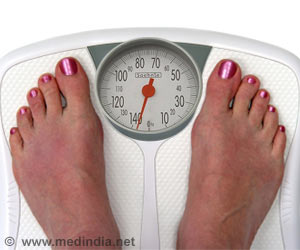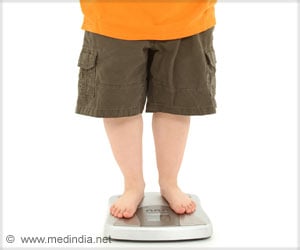For individuals 65 years of age and older, obesity, excess body fat around the waist and gaining weight after the age of 50 are associated with an increased risk of diabetes.

Mary L. Biggs, Ph.D., of the University of Washington, Seattle, and colleagues examined the relationship between measures of overall body fat, fat distribution, changes in these measures, and diabetes risk among 4,193 men and women 65 years of age and older. Measures of adiposity were determined when participants entered the study, and repeated 3 years later. The incidence of diabetes was ascertained based on use of antidiabetic medication or a fasting blood glucose level of 126 mg/dL or greater.
Over a median (midpoint) follow-up of 12.4 years, 339 new cases of diabetes were diagnosed among the study participants. The researchers found that BMI at baseline, BMI at 50 years of age, weight, fat mass, waist circumference, waist-hip ratio, and waist-height ratio were all strongly related to the risk of diabetes. "For each measure, there was a graded increase in the risk of diabetes with increasing quintiles of adiposity. Participants in the highest category of adiposity had an approximately 2- to 6-fold increased risk of developing diabetes compared with those in the lowest category. We found no evidence of significant statistical interaction by sex or race," the authors write.
Also, compared with participants whose weight remained stable (plus or minus 4.4 lbs.) over the time period, those who gained 20 lbs. or more between the age of 50 years and study entry had an approximately 3-fold greater risk of developing diabetes during follow-up, regardless of their BMI at 50 years of age. Participants who were obese (BMI 30 or greater) at 50 years of age and who experienced the most weight gain (more than 20 lbs.) between the age of 50 years and study entry had 5 times the risk of developing diabetes compared with weight-stable participants with normal BMI (less than 25) at 50 years of age.
The researchers also found that participants in the highest categories of both BMI and waist circumference had more than 4 times the risk of those in the lowest category of both measures. Participants with a greater than 4 inch increase in waist size from baseline to the third follow-up visit had a 70 percent higher risk of type 2 diabetes compared with those who gained or lost 0.8 inches or less.
"Results of this study affirm the importance of maintaining optimal weight during middle age for prevention of diabetes and, while requiring confirmation, suggest that weight control remains important in reducing diabetes risk among adults 65 years of age and older," the authors conclude.
Advertisement















